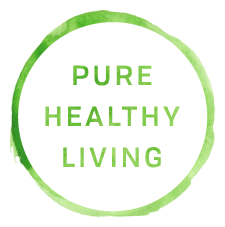How To Keep Your Skin Safe This Summer!
Purehealthyliving.com is reader – supported. If you click on a link or buy something via a link on this page, we may earn commission.
What’s all That Sun doing to Me?
Summer’s here! Long, sunny days at the beach, in the park or just enjoying your backyard – but what is all that UV doing to your skin? Humans have evolved to rely on the sun for many bodily functions:
Setting our biological clocks
Helping our skin to produce vitamin D
Lifting our moods by encouraging serotonin production
At all times of the year, the body relies on sunlight to know when to produce melatonin (our natural sleep hormone) so we can have a restful night’s sleep. Sunlight cues the body to wake up and makes your mind alert and focused. Sunlight is the most important way you can get vitamin D to prevent health problems like osteoporosis and even heart disease. For most people just 15 minutes of summer sun on face, arms, and legs are enough to meet their daily requirements of this vitamin. A lack of healthy sun exposure can cause seasonal affective disorder (SAD) which affects many people living in the northern latitudes during the dark winter months. But as with most things, moderation is the key to enjoying the benefits of healthy summer sunshine.
Too Much of a Good Thing?
While we all associate tanned skin with health; it’s actually the skin’s response to damage being done by ultraviolet (UV) exposure. Over years of exposure, UV light damages connective fibers in your skin called elastin. When these fibers break down, your skin starts to sag and lose the ability to snap back after being stretched.
UV damaged skin will bruise and tear more easily while taking longer to heal. Although sun damage isn’t visible when you're young, it will eventually show as premature aging later on. Worse – the damage from repeated bouts of excess sun exposure can ultimately result in skin cancer. Skin cancer is the uncontrolled growth of abnormal skin cells and the most prevalent type of cancer in the U.S. This abnormal growth results in tumors, which can be either benign (noncancerous) or malignant (cancerous).
There are three main types of skin cancer:
Basal cell carcinoma
Squamous cell carcinoma
Melanoma
Basal cell and squamous cell cancers are less serious and comprise close to 95% of all skin cancers; it’s curable when caught early. Melanoma is made up of abnormal skin pigment cells: melanocytes. It’s the most dangerous type of skin cancer and results in 75% of all skin cancer fatalities. Untreated it will spread to other organs (metastasize) and is hard to control.
Summer Fun Calls
We’re all looking forward to endless days making happy memories with friends and family enjoying outdoor activities. Whether it’s pool, beach or lakeside fun – no one wants to be all covered up cowering from the possibility of sun damage! What’s the best way to protect our skin so we can take advantage of the beautiful weather, sights, and activities of the summer season?
Sunscreen Explained
Dermatologists split sunscreens into two categories: physical or chemical. Physical sunscreen sits on top of the skin and works by deflecting UV rays. Chemical sunscreens go into your skin’s top layer and absorb (rather than block) UV rays. The most common ingredients in physical sunscreens are zinc oxide and titanium dioxide. With chemical sunscreens, there’s a much broader range of ingredients.
The most common are:
Avobenzone,
Oxybenzone and
Ecamsule (also known as Mexoryl)
Physical sunscreens completely block UV exposure and are not limited by time; as long as it’s reapplied when it comes off due to friction or water – wherever it’s applied is protected. Chemical sunscreens are another case. Categorized by sun protection factor (SPF) chemical sunscreens will provide varying levels of time-limited protection from the sun.
For example, if you would normally get sunburned after 10 minutes of sun, then applying an SPF 15 sunscreen would let you stay in the sun for about 150 minutes (15 times longer) without burning. This estimate depends on how fair you are, the UV index and how much sunscreen is used. For the best protection, experts recommend using an SPF 15 sunscreen and applying about one ounce for full body coverage (reapplying every 2 hours).
Don’t be Afraid of Healthy UV Exposure
While the dangers of excess UV exposure are well-known, you don’t to hide from the summer sun. In moderation, UV light has a broad range of health benefits and is the best source of healthy vitamin D. Judicious use of physical and chemical Sunscreen, getting between 10 - 20 minutes of unprotected sun exposure (depending on how pale you are), and using hats and shirts to minimize skin area exposed to UV will keep your skin healthy and attractive while letting you enjoy the outdoor season safely.

